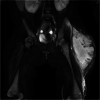Subcutaneous abscess caused by Streptococcus pneumoniae serotype 28F in an infant: a case report
- PMID: 33397309
- PMCID: PMC7784344
- DOI: 10.1186/s12887-020-02465-3
Subcutaneous abscess caused by Streptococcus pneumoniae serotype 28F in an infant: a case report
Abstract
Background: Invasive pneumococcal disease (IPD) is defined by the detection of Streptococcus pneumoniae on culture from samples obtained from a normally sterile site. Pneumococcal conjugate vaccines (PCV) have been developed for the prevention of IPD that is caused by highly virulent serotypes. Despite the effective reduction of IPD caused by vaccine serotypes after the introduction of PCV, there has been a rapid increase in the incidence of IPD caused by non-vaccine serotypes, and serotype replacement has become a global issue.
Case presentation: We report a previously healthy 4-month-old girl presenting with a large subcutaneous abscess caused by S. pneumoniae, identified as non-vaccine serotype 28F. The patient had received routine vaccination, including PCV vaccination. After the incision and drainage of the subcutaneous abscess, the patient was treated with antibiotics. She was discharged on Day 7 of hospitalization without any residual sequelae.
Conclusions: Subcutaneous abscess is a common pediatric skin and soft tissue infection, whereas pneumococcal subcutaneous abscesses are quite rare. As the pneumococcal serotype 28F caused a subcutaneous abscess, this serotype possibly has a high virulence. The incidence of IPD caused by non-vaccine serotypes, such as 28F, is expected to increase in the future. The consolidation of international data on pneumococcal serotypes is important for the development of novel PCV.
Keywords: Invasive pneumococcal disease; Non-vaccine serotype; Subcutaneous abscess.
Conflict of interest statement
The authors declare that they have no competing interests.
Figures
Similar articles
-
Hemophagocytic lymphohistiocytosis complicating invasive pneumococcal disease: a pediatric case report.BMC Pediatr. 2020 Jan 13;20(1):15. doi: 10.1186/s12887-020-1915-7. BMC Pediatr. 2020. PMID: 31931763 Free PMC article.
-
The impact of the changing pneumococcal national immunisation program among older Australians.Vaccine. 2021 Jan 22;39(4):720-728. doi: 10.1016/j.vaccine.2020.12.025. Epub 2020 Dec 29. Vaccine. 2021. PMID: 33384189
-
Early Streptococcus pneumoniae serotype changes in Utah adults after the introduction of PCV13 in children.Vaccine. 2016 Jan 20;34(4):474-478. doi: 10.1016/j.vaccine.2015.12.010. Epub 2015 Dec 17. Vaccine. 2016. PMID: 26706276
-
The relative invasive disease potential of Streptococcus pneumoniae among children after PCV introduction: A systematic review and meta-analysis.J Infect. 2018 Nov;77(5):368-378. doi: 10.1016/j.jinf.2018.06.004. Epub 2018 Jun 30. J Infect. 2018. PMID: 29964140
-
Pneumococcal serotype evolution in Western Europe.BMC Infect Dis. 2015 Oct 14;15:419. doi: 10.1186/s12879-015-1147-x. BMC Infect Dis. 2015. PMID: 26468008 Free PMC article. Review.
References
-
- Ladhani SN, Collins S, Djennad A, Sheppard CL, Borrow R, Fry NK, et al. Rapid increase in non-vaccine serotypes causing invasive pneumococcal disease in England and Wales, 2000-17: a prospective national observational cohort study. Lancet Infect Dis. 2018;18:441–51. doi: 10.1016/S1473-3099(18)30052-5. - DOI - PubMed
-
- Makwana A, Sheppard C, Borrow R, Fry N, Andrews NJ, Ladhani SN. Characteristics of Children With Invasive Pneumococcal Disease After the Introduction of the 13-valent Pneumococcal Conjugate Vaccine in England and Wales, 2010–2016. Pediatr Infect Dis J. 2018;37:697–703. doi: 10.1097/INF.0000000000001845. - DOI - PubMed
Publication types
MeSH terms
Substances
LinkOut - more resources
Full Text Sources
Other Literature Sources
Medical
Research Materials




